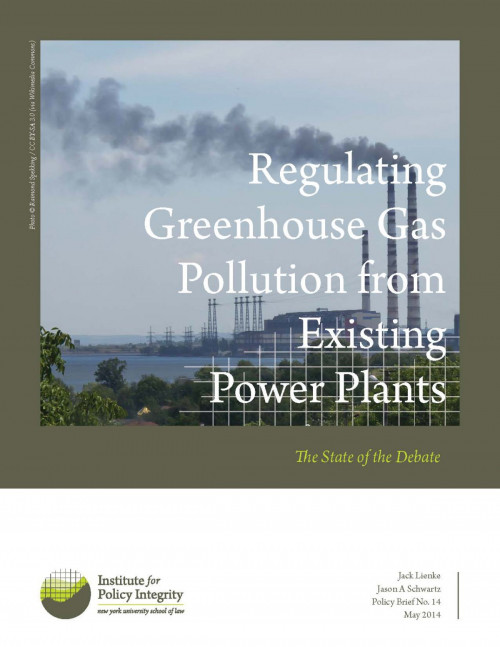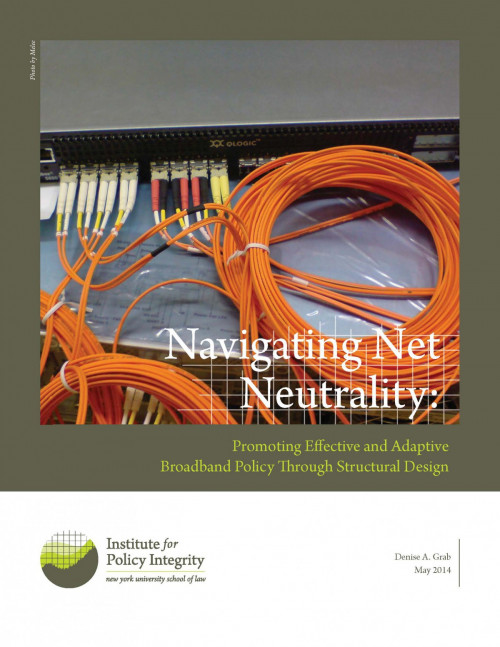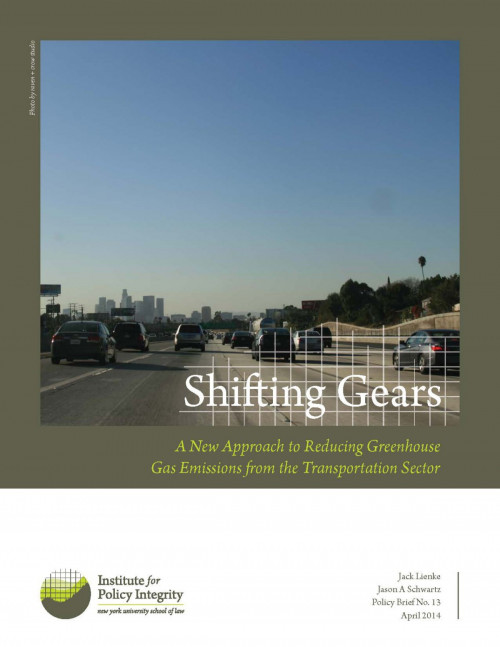-
EPA Proposes Power Plant Regulations
The centerpiece of the Obama Administration’s effort to address climate change through executive action is now a known quantity with the release of the EPA’s proposed carbon pollution guidelines for existing power plants. The rule, pursuant to Section 111(d) of the Clean Air Act, would cut carbon pollution from power plants 30 percent from 2005 levels by 2030 and allow states to use flexible approaches to meet this target.
-

Regulating Greenhouse Gas Pollution from Existing Power Plants
The State of the Debate
Environmentalists, industry groups, and state governments have been vocal regarding their preferences for the shape of EPA’s forthcoming rule on greenhouse gas pollution from existing power plants. In this policy brief, Jack Lienke and Jason Schwartz survey 30 public letters, white papers, presentations, and reports from these stakeholders and outline their positions.
-
Joint Public Comments on the Social Cost of Carbon to DOE and HUD
On May 16, we submitted joint comments on the social cost of carbon to two Department of Energy energy efficiency rules and to another energy efficiency rule proposed jointly by the Department of Housing and Urban Development and the Department of Agriculture. They are substantially similar to those we submitted for EPA’s proposed New Source Performance Standards rule on May 9th. The comments to DOE are available here, and the comments to HUD are available here.
-

Navigating Net Neutrality
The Federal Communications Commission’s ability to protect the open Internet has been limited, due to recent court decisions. This report examines the regulatory options and recommends to FCC a course forward that will best promote the benefits of widespread Internet access.
-
Comments Submitted to EPA on Proposed Emissions Standards for New Power Plants
Policy Integrity submitted comments to the Environmental Protection Agency on its proposed performance standards for greenhouse gas emissions from new power plants. To help maximize the net benefits of the proposed standards and to ensure their solid legal foundation, Policy Integrity made the following recommendations:
-
Policy Integrity Welcomes Supreme Court Decision on Cross-State Air Pollution Rule
Policy Integrity welcomes the U.S. Supreme Court’s 6-2 landmark decision to uphold the Cross-State Air Pollution Rule, which requires upwind states to reduce emissions that cause downwind states to exceed air quality standards set by the Environmental Protection Agency (EPA).
-

Annual Energy Outlook Projections and the Future of Solar PV Electricity
The topic of this paper is the assumed growth of solar photovoltaic (PV) in current energy models, with a focus on information from Annual Energy Outlook (AEO) of the U.S. Energy Information Administration (EIA). EIA resolves the difficulty of modeling solar energy into the future by assuming its current growth will not continue. However, EIA’s assumptions on the future costs of solar PV are highly pessimistic, and its methodology would appear to bias its “Reference Case” projections toward lower growth of solar energy. Sure enough, past AEOs have systematically underestimated the future growth of solar PV. Energy modelers therefore may need to adjust the AEO forecast in order to reflect a most likely baseline trajectory for solar PV.
-
Policy Integrity Supports Upholding of EPA Mercury and Toxic Standards
Policy Integrity welcomes the decision by the U.S. Court of Appeals for the D.C. Circuit to uphold the Environmental Protection Agency’s (EPA) rule limiting mercury and other toxic air pollutants emitted by fossil-fuel burning power plants, which are the largest source of mercury emissions. The decision supports EPA efforts to improve our air quality and safeguard public health.
-

Rethinking Health-Based Environmental Standards
In Whitman v. American Trucking, the Supreme Court interpreted the Clean Air Act to require the EPA to set the National Ambient Air Quality Standards (NAAQS), without considering costs. Instead, the agency must rely exclusively on health-related criteria. The authors argue that such health-based standards are problematic because there is no coherent way to set the permissible level of pollution based on health considerations alone and, ironically, the NAAQS have generally been set at levels that are inefficiently lax from an economic perspective. The authors urge a reinterpretation of the American Trucking case that would allow the EPA to consider costs-benefit analysis when it would lead to more stringent standards, as it currently does for most regulated pollutants.
-

Shifting Gears
A New Approach to Reducing Greenhouse Gas Emissions from the Transportation Sector
To overcome a stall out of “command-and-control” regulations for biofuels, EPA should move towards a flexible, market-based emissions trading system for the transportation sector.
